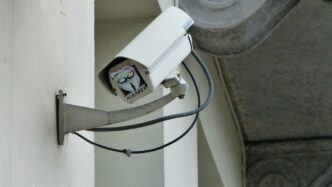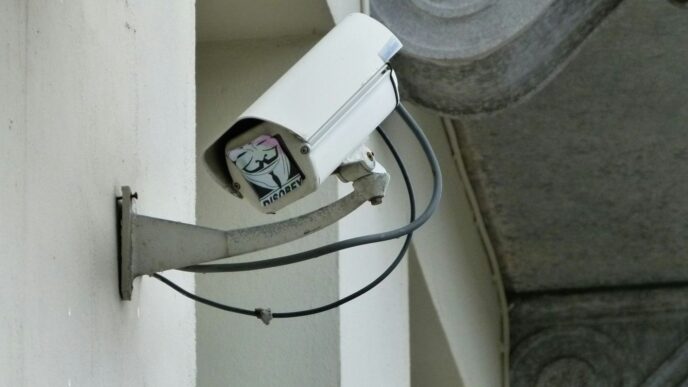Thinking about going solar in 2025? Sunnova is making waves with its fresh approach to home energy. They’re not just putting panels on roofs—they’re teaming up with smart tech companies, local experts, and offering flexible options for all kinds of homes. Whether you’re curious about solar, batteries, or getting your house ready for an electric car, Sunnova is working to make it easier and more affordable. Here’s what you should know about how Sunnova is changing the way we power our homes.
Key Takeaways
- Sunnova is partnering with tech leaders to speed up and simplify solar design for homeowners and contractors.
- Roof condition, shading, and layout all matter when it comes to getting the most out of a Sunnova solar installation.
- Sunnova systems can include batteries and smart controls, so you can save more and keep the lights on during outages.
- If you’re planning to charge an electric car at home, Sunnova helps size your solar system to cover those extra needs.
- Flexible financing and bundled packages from Sunnova make it easier to go solar, add batteries, and get ready for future energy needs.
Sunnova’s Expansion of Innovative Home Energy Solutions
Sunnova isn’t just keeping up with solar technology, they’re trying to be ahead of the pack. As energy costs shift and states roll out new rules all over the place, Sunnova keeps pushing for better tech and smarter partnerships. Here’s how they’re making moves in 2025:
Partnerships Driving Solar Innovation
Sunnova has teamed up with leading tech providers to roll out advanced solutions for home solar. These partnerships aren’t just for show—they really matter. By working closely with companies specializing in next-gen solar design and battery technology, Sunnova is able to:
- Offer faster installation and more precise solar planning
- Make battery storage more accessible and reliable
- Stay on top of new home electrification needs as people switch appliances and cars to electric
OpenSolar, for example, brings top-tier design software, while battery partners help make sure Sunnova’s storage isn’t just a backup, but a real part of how a home runs every day.
AI-Powered Design with OpenSolar and Catalyst
This is where things get seriously high-tech. Using the OpenSolar platform, Sunnova can now use AI to design solar systems fast. Instead of waiting days for a quote or plan, homeowners can get an accurate custom proposal in just minutes. That means:
- Quick system sizing tailored to your roof
- Instant performance estimates (no more wild guesses)
- Smart integrations, so if you’re considering a battery or an EV charger, it’s all priced in from the start
By running all of this through their Catalyst platform, Sunnova’s local dealers get a big boost in accuracy and speed, helping customers make decisions with way less hassle.
Statewide Customization and Local Expertise
Solar isn’t one-size-fits-all. Sunnova works all across the country but always tailors their approach to where you live. They partner with local contractors who actually know what Florida’s storms are like, or how roofs in Northern California are built. Here’s what that means for homeowners:
- Local companies handle installations and ongoing support
- Custom options for different roof types and weather conditions
- Fast, responsive service—because the team is nearby
In short, Sunnova is trying to give people the best of both worlds: the big reach and technology of a national company, and the neighborly know-how of local pros. That’s a combination not every solar company can pull off.
Assessing Home Readiness for Sunnova Solar Installations
Before jumping into a solar upgrade with Sunnova, most folks start by looking at the bones of their house—mainly the roof. There’s more to it than just making sure you don’t have any leaks. Here’s how Sunnova checks if your home is ready for solar, and what you might need to consider along the way.
Evaluating Roof Structure and Longevity
You don’t have to be a contractor to understand that your roof’s condition is one of the first things a solar company like Sunnova will look at. Most solar panels are pretty light—think 2-4 pounds per square foot—so they’re not about to crush your house. But that doesn’t mean every roof is ready. Here’s a quick list of what most evaluators will check:
- Age of roof: If it’s coming up on 15-20 years (or more), replacement might be due soon.
- Materials: Asphalt shingles, tile, and metal are all common—but some materials last longer than others.
- Damage: Leaks, missing shingles, or sagging suggest repairs are needed before any panels go up.
Typical Roof Lifespan for Solar Readiness
| Roof Material | Expected Lifespan (years) | Notes |
|---|---|---|
| Asphalt Shingles | 15-30 | Most common; check for granule loss |
| Tile (Concrete/Clay) | 25-50 | Heavy, but long-lasting |
| Metal | 40-70 | Great for solar longevity |
Addressing Shading and Contours
What about those trees you love, or the second-story addition that looks great but throws shade at the worst time of day? Shading can really cut back your solar gains. Evaluators look for features like:
- Tree coverage: Tall shade trees might be nice in the summer, but they block the sun year-round.
- Chimneys and Dormers: Odd roof shapes or add-ons cast awkward shadows.
- Direction and pitch: South-facing roofs are best, but east/west can work, too.
Combining Solar with Roof Replacement
Real talk: If your roof’s on its way out, combining a solar install with a roof replacement just makes sense. A bunch of folks who’ve done this say it saved them time and worry. Here’s why you might consider this route:
- You align the lifespan of roof and panels, so you’re not redoing either job twice.
- Some companies (including Sunnova) offer bundled deals, sometimes for less than doing both jobs separately.
- Roofers and solar installers can coordinate, which means fewer headaches down the line.
A little planning now saves a lot of mess (and money) later. So, when you’re thinking about going solar, checking off these home-readiness boxes will make your Sunnova journey a whole lot smoother.
Optimizing Solar Output and Monitoring Performance with Sunnova

So you’re thinking about getting solar with Sunnova or maybe you’ve already made the leap. Either way, the next step is letting your new panels work as hard as possible for you—without having to micromanage them every sunny day.
Choosing the Right Solar Panel Configuration
Not all rooftops are created equal, and honestly, cramming the biggest panels you can find on your house isn’t always the answer. The real trick is matching your roof’s shape, sunlight angles, and available space to the right mix of panel size and placement. Here’s a quick snapshot of what goes into configuration:
- Your roof orientation (south-facing roofs usually get more direct sunlight)
- The shadows cast by trees, chimneys, or nearby buildings
- Whether smaller or oddly-shaped panels might fit better and improve overall sunlight capture
- The wattage and efficiency ratings of the panels themselves
A good installer (like Sunnova’s partners) will look over your power use, study your roof, and figure out how to get the most juice with what you’ve got. Sometimes that means fewer, more efficient panels rather than packing as many as possible.
Managing Panel Efficiency Over Time
Solar panels are great, but they’re not magic. Over the years, even the best units lose a bit of their spark. Most systems start around 20% efficiency and see a slow decline (called solar degradation) as seasons roll by. Here’s what to expect:
| Year After Installation | Expected Output From Original Capacity |
|---|---|
| 1 | 100% |
| 10 | ~92% |
| 20 | ~85% |
| 25 | ~80% (typical warranty threshold) |
Manufacturers usually guarantee at least 80% of the original output by year 25. If panels drop below that, replacements can be in order. It’s just the nature of living things—yes, even solar panels age!
Monitoring, Maintenance, and Guarantees
Nobody wants to climb on their roof to check each panel. That’s why Sunnova hooks homeowners up with easy-to-use monitoring tools. Crucial info about your energy output lands right in your hands:
- Real-time and historical energy data via app or web portal
- Automated alerts for any weird dips in performance
- Reports that help you track how much of your power bill you’re saving month-to-month
On top of that, Sunnova steps in with regular maintenance options and (usually) a production guarantee. Basically, if the panels don’t hit what was promised in the contract, you may get a credit or replacement.
Bottom line: With smart planning, easy monitoring, and proactive upkeep, Sunnova’s approach lets you squeeze the most from your solar investment—without constantly babysitting your roof.
Battery Storage and Smart Controls with Sunnova Systems
Adding a battery to your Sunnova solar system is like giving your home a serious upgrade. Not only does it back you up when the grid fails, but it also grants you more control over how and when you use your energy. Let’s break down why people are turning to batteries and smart panels, and how Sunnova is making these options practical for everyday homeowners.
Benefits of Solar + Battery for Backup and Savings
When the power cuts out—maybe it’s a wild summer thunderstorm or a sudden blackout—you want your fridge running and your lights on. That’s where battery storage steps in. Here’s how it helps:
- Keeps your crucial devices powered during outages
- Lets you use your stored solar energy instead of buying from the grid when rates are highest
- In areas with changing utility prices, batteries can lower your electric bill by shifting your usage to off-peak times
- Useful even if net metering isn’t available in your area
Here’s a snapshot of what a typical home battery does:
| Feature | Benefit |
|---|---|
| Outage Backup | Operates appliances for several hours |
| Peak Time Shifting | Uses solar power to avoid high prices |
| Maximizing Solar Self-Consumption | Reduces reliance on grid electricity |
Integration of Smart Electric Panels
If you like the idea of controlling your home’s energy, a smart electric panel is the next step. These panels are changing everyday home life:
- You can see, in real time, where energy is going in your home using your phone
- Remotely turn things off—even when you forget, like the oven or iron after you leave
- Prioritize important appliances (like medical equipment or the fridge) when you’re running on battery
A smart panel really takes the guesswork out of energy use and lets you stretch every stored kilowatt for what matters.
Load Controllers for Enhanced Energy Management
Now, load controllers take energy management a notch higher, making sure you don’t waste battery life on stuff you don’t need during an outage. These gadgets:
- Turn off non-essential circuits when the grid is down, so your battery lasts longer
- Allow you to program which devices or rooms stay powered
- Help you stay within set power limits during peak times to avoid higher bills
A load controller can make a single battery stretch much further, possibly saving you from having to buy extra storage. If you’re trying to save money, it’s worth exploring if adding a controller fits your needs.
Untangling how batteries, smart panels, and load controllers work together can feel overwhelming, but Sunnova is making it more approachable. You don’t have to be an energy expert to get your home ready for outages and manage bills—all you need is the right set of tools.
Supporting Electric Vehicle Adoption with Sunnova Solar
Home electric vehicle (EV) adoption is skyrocketing, and people are starting to wonder if their home energy setup can actually keep up. If you’ve got an EV—or you’re planning to get one—Sunnova has options to help you keep your car running on clean electricity, straight from your roof. Charging your EV at home with solar energy is like giving yourself a break from gas stations and unpredictable energy prices. Here’s how Sunnova can make that switch easier.
Home EV Charging Solutions
You really have two main options at home: Level 1 and Level 2 chargers. The basic Level 1 works with any standard outlet, but let’s be honest—it’s slow, and most folks find it a little impractical if they drive often. Level 2 chargers are a big step up, letting you charge your EV six to eight times quicker than a regular wall plug. If you’re thinking about making the upgrade, it’s a simple move that could save you loads of time every week.
Top reasons to choose a Level 2 charger:
- Charges your EV much faster than Level 1
- More flexibility to schedule charging overnight
- Reduces the need to rely on public charging stations
You can even sync your home charging with solar, making it extra efficient once you’ve installed your Sunnova system.
Sizing Solar for Vehicle Charging Needs
If you want your panels to keep up with your EV, you need to plan ahead.
Factors that affect how many solar panels you’ll need:
- Your daily driving mileage
- The efficiency of your specific EV model
- Your region’s average sunlight hours
Here’s a quick table to give you an idea:
| Daily Miles Driven | kWh Needed/Day | Panels Needed (assume 400W panels, 4h sunlight/day) |
|---|---|---|
| 20 miles | ~6 kWh | 4-5 panels |
| 40 miles | ~12 kWh | 7-8 panels |
| 60 miles | ~18 kWh | 10-12 panels |
Planning for this early, especially if you’re already thinking about more home electrification, can save you from needing a second solar install down the road.
Advantages of Clean Energy for Transportation
Switching your EV charger to solar comes with benefits that go way beyond cost savings:
- Secure yourself against rising gasoline prices
- Drive with the knowledge your energy source is renewable
- Reduce your household’s carbon impact, both at home and on the road
With the growth in mobility tech and car sharing over the next few years, combining solar with EV charging will likely become the standard for savvy homeowners. If you’re looking to keep up with the changes in how we all get around, integrating a Sunnova solar system could be the best kind of prep you can do right now.
Financial Solutions and Package Options from Sunnova
Sunnova goes beyond the panels—they’re actually thinking about the entire process of getting solar and making it fit into your life. You have different ways to pay for solar, and some folks find the choices a little overwhelming at first. Let’s spell out the main options you’ll see if you talk to Sunnova in 2025.
Solar Leases, PPAs, and Direct Purchase Options
You won’t need to write a giant check just to go solar. Homeowners can pick between solar leases, Power Purchase Agreements (PPAs), loans, or buying outright. Here’s what that actually means:
- Solar Lease: You pay a fixed monthly fee to use the solar power, but Sunnova owns the equipment. Maintenance is included.
- Power Purchase Agreement (PPA): Pay for the electricity at a per-kWh rate, usually lower than what you’d pay the utility. No upfront cost; Sunnova owns the system.
- Loan: You borrow money for the equipment and installation, then pay it back over time. Eventually, you own the panels.
- Cash Purchase: Pay everything up front; you own everything. This often means you save the most long-term, but it’s the most expensive right away.
Here’s a quick comparison table:
| Option | Upfront Cost | Who Owns It? | Monthly Payment | Maintenance | Eligible for Tax Credit? |
|---|---|---|---|---|---|
| Solar Lease | Low/None | Sunnova | Yes | Included | No |
| PPA | Low/None | Sunnova | Yes (by usage) | Included | No |
| Loan | Low/Med | Homeowner | Yes | Varies | Yes |
| Cash | High | Homeowner | No | Varies | Yes |
Navigating Incentives and Tax Credits
There’s money on the table, if you know where to look. Federal and some state governments offer tax credits and rebates, but the details depend on how you pay:
- If you buy (with cash or a loan), you can claim the federal solar tax credit yourself.
- Leases and PPAs mean Sunnova takes the tax incentives, but they usually pass the savings on through reduced payments.
- Keep in mind, you need enough tax liability to benefit from credits if you own.
- State and local programs might pay up-front rebates, credit your utility bill, or give property tax breaks.
Bundling Solar, Batteries, and Smart Technology
Sunnova doesn’t just sell you a roof full of panels and call it a day. The company actually lets you package your solar with batteries, smart panels, and even EV chargers. Bundling can be easier and sometimes cheaper than adding each thing separately.
Benefits of bundling your home energy upgrades:
- One contract and one installation date—way less hassle.
- Integrated monitoring and maintenance, so you know who to call for help.
- Sometimes, discounts for buying everything together (worth asking what deals are running).
All that said, it’s not one-size-fits-all. Think about your home, energy habits, and what you expect for the next decade—or two! Sunnova can map out package options—it’s worth getting their recommendation based on your goals and budget.
Designing for Future Growth: Flexible and Scalable Sunnova Systems

Sunnova gets it—our energy needs aren’t standing still. Maybe you’re thinking about adding an electric car down the road, or more family moves in, or suddenly everyone has their own computer. It makes sense to want solar that can handle what’s next, not just what’s happening today. Sunnova’s systems are set up to grow with you, making upgrades and changes surprisingly easy.
Expanding Existing Solar Installations
You don’t have to start from scratch if your needs change. Expanding your system can be as straightforward as adding new panels or another inverter. Here’s what that upgrade path might look like:
- Request an assessment to see how much more power you might need.
- See if your roof and current wiring can take on extra panels.
- Integrate with your original system or add a second, depending on what fits best.
Plenty of families eventually power up their homes even more by adding things like heat pumps or extra AC. When that happens, it’s smart to check if your original solar setup is still enough. If not, it’s probably time to upgrade with more panels or even a bigger inverter.
Preparing for Increased Home Electrification
As more folks switch out gas stoves for electric, or add electric vehicles, home electric use goes way up. Trying to guess the right solar size can feel tricky, but there are some guidelines:
| Appliance or Upgrade | Typical Power Needs (kWh/month) |
|---|---|
| Electric vehicle (driven 1,000 miles) | 250–300 |
| Heat pump | 600–1,200 |
| Electric oven | 15–30 |
Steps for anticipating these changes:
- Think about what upgrades you might want over the next few years.
- Share your plans with your solar consultant—they can help adjust system sizing.
- Consider going a little bigger from the start, or leave room for easy expansion later.
Planning for Evolving Energy Needs
No one knows exactly what the future holds, but planning ahead saves trouble later on. Here’s how Sunnova solar can stay ready:
- Compatible with battery storage add-ons if you want backup power.
- Able to link up with smart panels or load controllers for better energy management.
- Flexible financing, so you can spread out upgrades over time instead of making one huge upfront payment.
If you want to keep up with emerging technology trends, it’s a good idea to choose a system that’s open to new tools and devices. Sunnova’s systems are designed that way, letting you add on or upgrade as technology changes—no huge hassle down the line.
Flexible solar isn’t just about being ready for tomorrow. It also means you can enjoy whatever’s next without a stressful remodel or major expense.
Wrapping Up: Sunnova and the Future of Home Energy
So, that’s the big picture. Sunnova is making it easier for regular folks to get into solar, whether you’re just starting out or looking to add batteries, EV chargers, or smart panels. They’re working with local experts, using new tech like AI-powered design tools, and offering different ways to pay so more people can make the switch. It’s not just about saving money—though that’s a big part of it—it’s also about having more control over your energy and being ready for whatever comes next. If you’re thinking about solar in 2025, Sunnova’s got a lot of options to check out. The sun isn’t going anywhere, and with companies like Sunnova, it’s getting a lot easier to put it to work for you.














